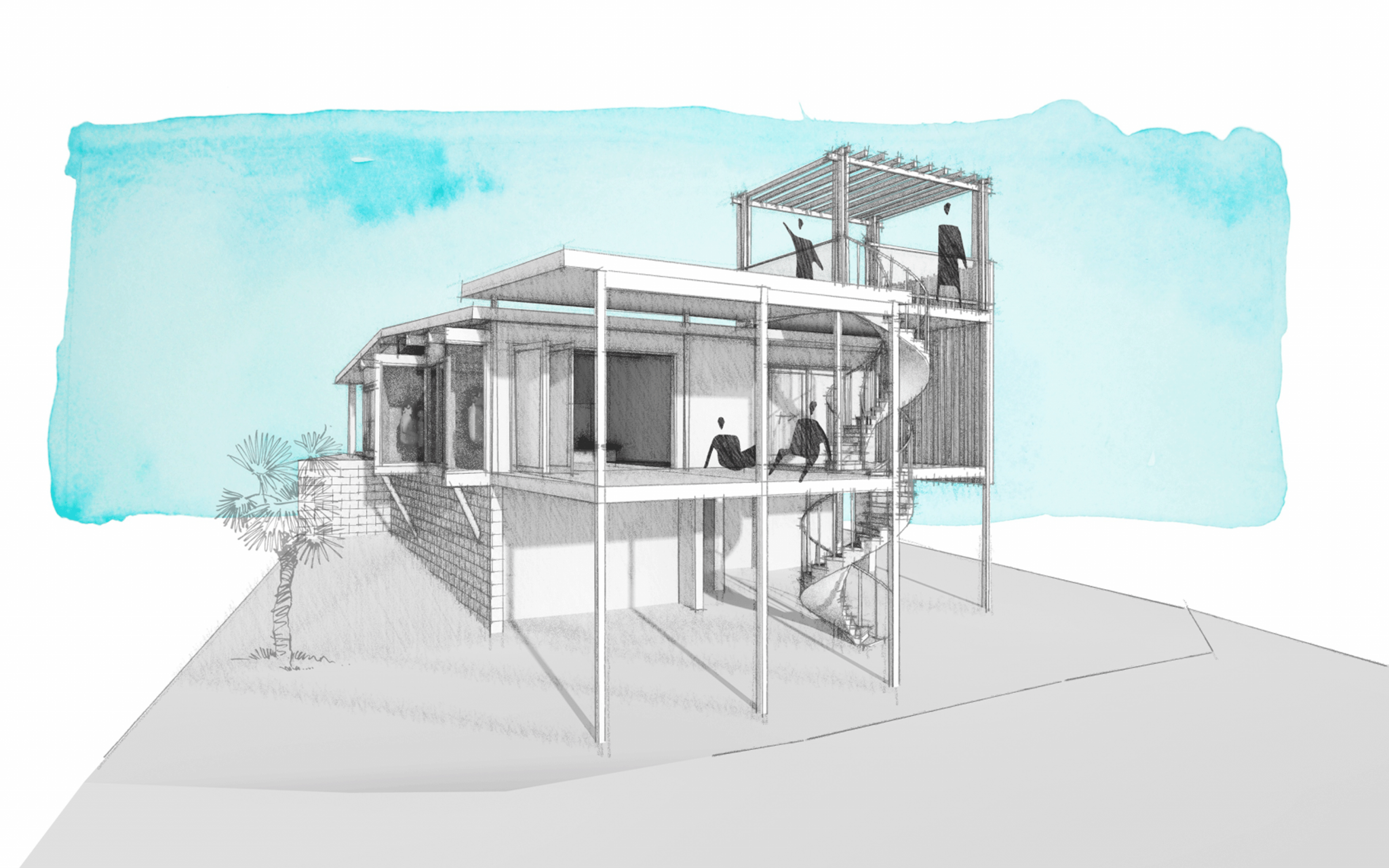Designing a home for the subtropics:

Subtropical house design refers to the design of houses in regions with a subtropical climate, which is characterized by hot and humid summers and mild winters. These regions often experience high levels of solar radiation, which can make it challenging to keep a house cool and comfortable. However, by incorporating passive cooling, correct orientation, natural ventilation, and natural light, it is possible to design a house that is energy-efficient and comfortable year-round.
One effective strategy for passive cooling in subtropical house design is to use passive solar design techniques. This involves orienting the house to take advantage of the sun’s movement in the sky and using materials and design elements that absorb and store heat during the day and release it at night. For example, windows can be placed on the north and south sides of the house to allow for maximum sunlight in the winter, while overhangs and shading devices can be used to block the sun’s rays during the summer.
Correct orientation is another important factor in subtropical house design. The house should be oriented to take advantage of natural breezes and to minimize the amount of direct sunlight that enters the house. This can be achieved by placing the house at an angle to the sun’s path and by using windows, doors, and other openings to create cross-ventilation.
Natural ventilation is another effective strategy for cooling a house in a subtropical climate. By using windows and doors that can be opened to allow for the flow of fresh air, it is possible to keep a house cool and comfortable without relying on mechanical cooling systems. This is especially effective when used in conjunction with passive solar design techniques, as the heat absorbed by the house during the day can be dissipated through natural ventilation at night.
Finally, using natural light is an effective way to reduce the need for artificial lighting and to make a house more comfortable and energy-efficient. By using windows, skylights, and other openings to allow natural light to enter the house, it is possible to reduce the need for electrical lighting and to create a brighter, more welcoming living space.
In summary, by incorporating passive cooling, correct orientation, natural ventilation, and natural light into the design of a subtropical house, it is possible to create an energy-efficient and comfortable living space that is well-suited to the unique challenges of a subtropical climate.
Subtropical house design is all about maximizing the benefits of living in a warm climate while minimizing the drawbacks. One of the main challenges of subtropical design is keeping the house cool and comfortable during the hot summer months. There are several strategies that can be employed to achieve this, including the use of passive cooling, correct orientation, natural ventilation, and natural light.
One of the most effective ways to keep a subtropical house cool is to incorporate passive cooling techniques. Passive cooling refers to the use of natural processes to regulate the temperature inside the house. This can be achieved through the use of shading devices, such as trees, awnings, and shutters, to block the sun’s rays from entering the house. Using materials with high thermal mass, such as concrete or masonry, can also help to absorb and store heat during the day and release it at night, helping to keep the house cool.
Correct orientation is another important consideration in subtropical house design. The house should be oriented to make the most of the prevailing winds and to take advantage of the cooling effects of shade. For example, in the southern hemisphere, the house should be oriented with the longest side facing north-south to take advantage of the cooling breeze that tends to blow from the south east.
Natural ventilation is another key strategy in subtropical house design. By designing the house to take advantage of natural airflow, it is possible to keep the house cool and comfortable without the need for mechanical ventilation or air conditioning. This can be achieved through the use of windows, doors, and vents that can be opened and closed to allow the flow of air through the house.
Finally, the use of natural light can help to reduce the need for artificial lighting and cooling. By designing the house with large windows and skylights, it is possible to take advantage of the natural light that is available, reducing the need for electricity and helping to keep the house cool.
In summary, the strategies of subtropical house design that incorporate passive cooling, correct orientation, natural ventilation, and natural light can help to create a comfortable and energy-efficient living environment in warm climates. By using these techniques, it is possible to enjoy the benefits of living in a subtropical region while minimising the drawbacks.